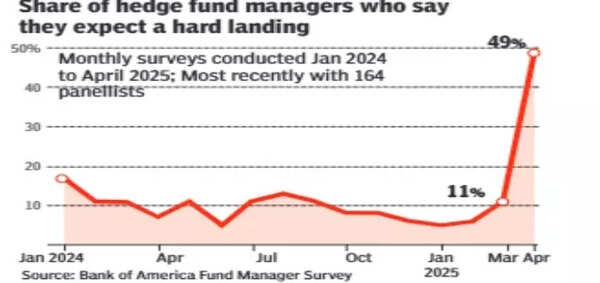U.S. President Donald Trump’s “liberation day” reciprocal tariffs announced Wednesday marred all expectations of any relief from the trade policy that has unnerved markets for weeks now. India would face 26% tariff rates in addition to a baseline tariff of 10%.
Mr. Trump argued India subjected U.S. to 52% tariff rates in contrast to Washington charging “almost nothing for years and years and decades”. A similar notion was also cited in the U.S.’ Trade Representative (USTR) report on Foreign Trade Barriers tabled on March 31. Based on the concerns highlighted in the report, initial observations and the sectors highlighted in the Fact Sheet, we list down some industries that may or may not get affected by the recently announced measures:
Medical devices
White House charged India of “uniquely burdensome and/or duplicative testing and certification requirements” before being allowed to sell their chemicals, telecom products and medical devices in India. The USTR report elaborated the criterions of the Bureau of Indian Standards (BIS), that seek mandatory compliance, do not fully align with international standards. Further, it held they do not demonstrate about them being “ineffective or inappropriate”.
According to the White House, U.S. exports of the mentioned products would increase by at least $5.3 billion if barriers are removed.
On the impact to the sector back home, Rajiv Nath, Forum Coordinator at the Association of Indian Medical Device Industry (AiMed), the tariffs may pose a “significant challenge” to the sector’s growth. India is recognised for its cost-effective and high-quality medical devices, primarily in low-volume high value consumables category. “The tariff may possibly impact device exports, and we have to explore window of opportunities from places where U.S. has been seeking to diversify its supply chain dependence on any one nation,” Mr. Nath held. Furthermore, Himanshu Baid, Managing Director of device manufacturer Polymedicure held the country’s primary obstacle entailed non-tariff barriers than barriers themselves. “Regulatory hurdles in the U.S. are steep, with FDA approval costs ranging from $9,280 to over $540,000, whereas U.S. exporters face relatively minimal costs when entering India,” he underlined.
Telecom and networking equipment
White House charged India of levying tariffs of 10-20% on networking switches and routers tariffs in comparison to nil across the Atlantic. Its concerns in the realm were of a similar nature to medical devices. Back home however, opinion is divided on the tariffs’ potential impact.
According to Professor N.K. Goyal, Chairman Emeritus at the Telecom Equipment Manufacturers Association of India (TEMA), the mobile phone and telecom equipment industry would have no problems if the duties were reduced to zero. He explained IT equipment are already part of WTO agreement most of them covered under zero duty and as of now mobile phones attract duty of 20%. With respect to telecom equipment, Professor Goyal held telecom equipment was earlier coming from China which is not happening now. “We do not see it as a big challenge (reducing duties to zero) because U.S. is not exporting telecom equipment to India but components and raw materials,” he told The Hindu.
However, Konark Trivedi, Founder & Managing Director with equipment maker Frog Cellsat apprehended the tariff regime could increase costs for manufacturers, disrupt supply chains, and create uncertainty for businesses. “Further, given the telecom infrastructure relies on a complex ecosystem of components, many of which are exported globally, such tariffs would inevitably increase operational expenses and reduce competitiveness of Indian firms in international markets,” he stated.
Gems and Jewellery
The Gem and Jewellery Export Promotion Council (GJEPC) held the tariffs are likely to “significantly impact” the sector. Furthermore, Paresh Parekh, Partner and Retail Tax Leader at EY India suggested a potential “adverse impact” that could translate into risk of job losses and margin erosions. He underlined that the sector had already been reeling under stress in the past few years because of changing customer preferences, soaring gold prices and competition for polishing from other countries, among other factors.
The GJEPC underlined they are anticipating challenges in sustaining the country’s present export volume of about $10 billion to U.S. “We urge the Government of India to advance the Bilateral Trade Agreement with U.S. as it would be crucial in navigating the tariff issues and securing long term interest of the sector,” the council held.
Automobiles
The White House observed that European Union (at 10%) and India (at 70%) impose “much higher duties” on similar vehicular imports. The latest round of tariffs thus seek an equalisation of weights.
However, Rajesh Menon, Director General at the Society of Indian Automobile Manufacturers (SIAM) explained that the order does not include automobiles since they have already been subject to Section 232 tariffs of 25% announced March 26. “We do not expect any significant impact on the Indian Automobile industry since there are limited exports to U.S., but we will continue to monitor the situation,” he stated.
The same paradigm applied to automobile components as well.
Textile
According to Paresh Parekh, the tariff regime poses an opportunity for the Indian textile sector to increase its market share in the U.S. He observed India’s compatriots in the realm were subject to greater tariffs. This entailed Bangladesh (37%), Vietnam (46%), Cambodia (49%), Pakistan (29%), China (54%) and Sri Lanka (44%).
However, Mr. Parekh warned, “If there is slowdown in consumption in U.S. due to higher prices, the overall US market itself may shrink.”
Published – April 04, 2025 10:57 pm IST







































